Case Study: Leveraging MYSverse for Malaysian Government Engagement
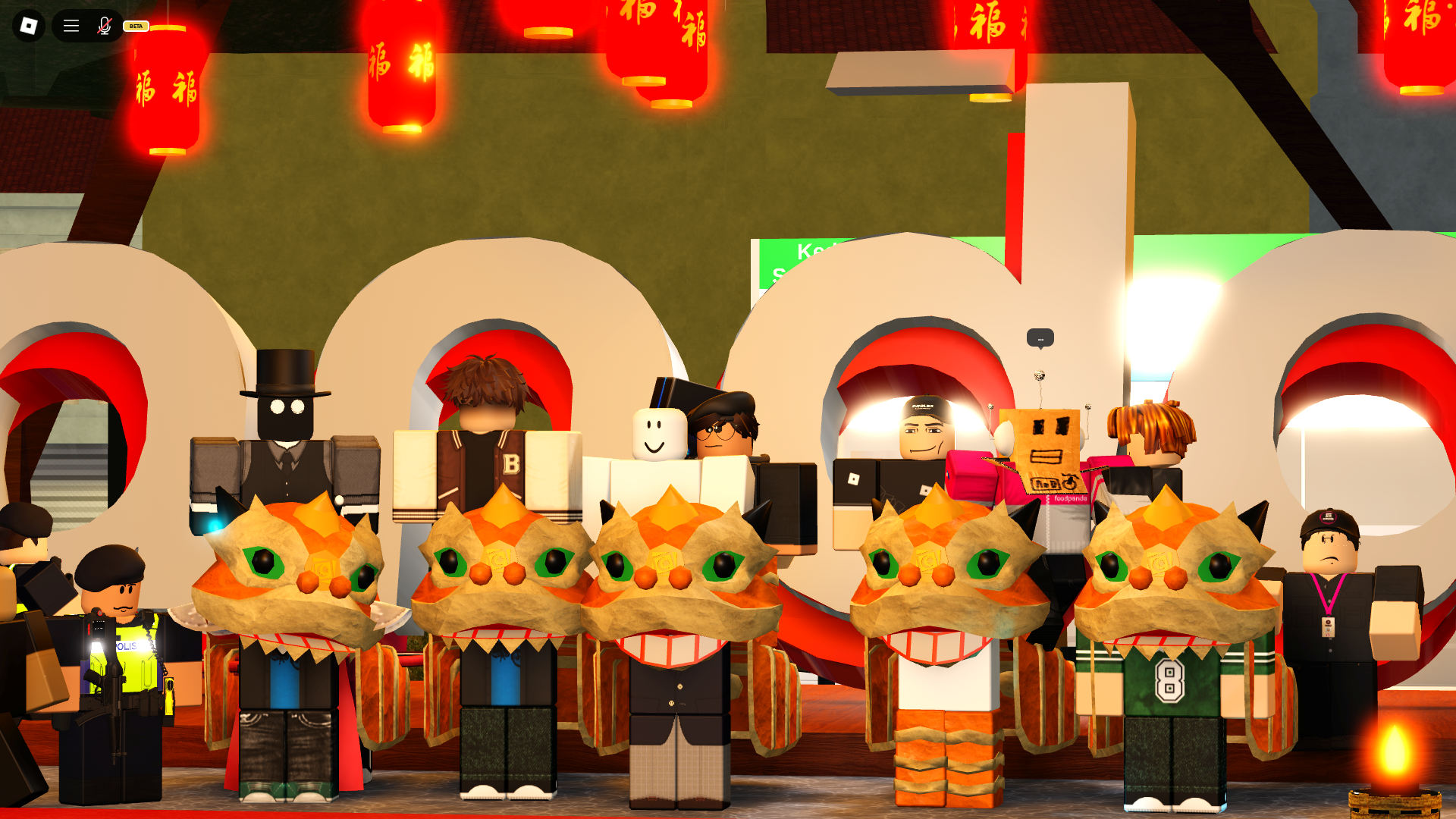
Introduction
MYSverse is a Malaysian virtual experience platform built on Roblox, designed to authentically recreate Malaysia’s environments and culture in a metaverse setting. With a community ethos of “by Malaysians, for everyone,” MYSverse blends fun gameplay with educational and cultural content (MYSverse Malaysian Community | Roblox Group - Rolimon's). This case study explores how the Malaysian government can harness MYSverse’s strengths in realism, immersive roleplay, and cultural integration to benefit various public sectors. We will examine opportunities in public engagement, education, tourism promotion, civil service simulations, and national branding. Comparisons to international examples – where governments have used metaverse platforms or gaming environments for outreach and training – are included to illustrate real-world precedents.
Overview of MYSverse Platform
MYSverse is the largest community-driven initiative creating authentic Malaysian-themed games on Roblox (MYSverse Malaysian Community | Roblox Group - Rolimon's). It features a range of virtual experiences that mirror real Malaysian settings, from bustling cities to rural villages. Key projects include:
- Bandaraya: A flagship city roleplay set in a detailed recreation of Kuala Lumpur, serving as a hub for urban gameplay (MYSverse). Players can navigate city life with realistic elements like traffic, public transport, and city services.
- Lebuhraya: A highway driving experience where users drive Malaysian roads and can roleplay as traffic police or firefighters (MYSverse), highlighting real public services.
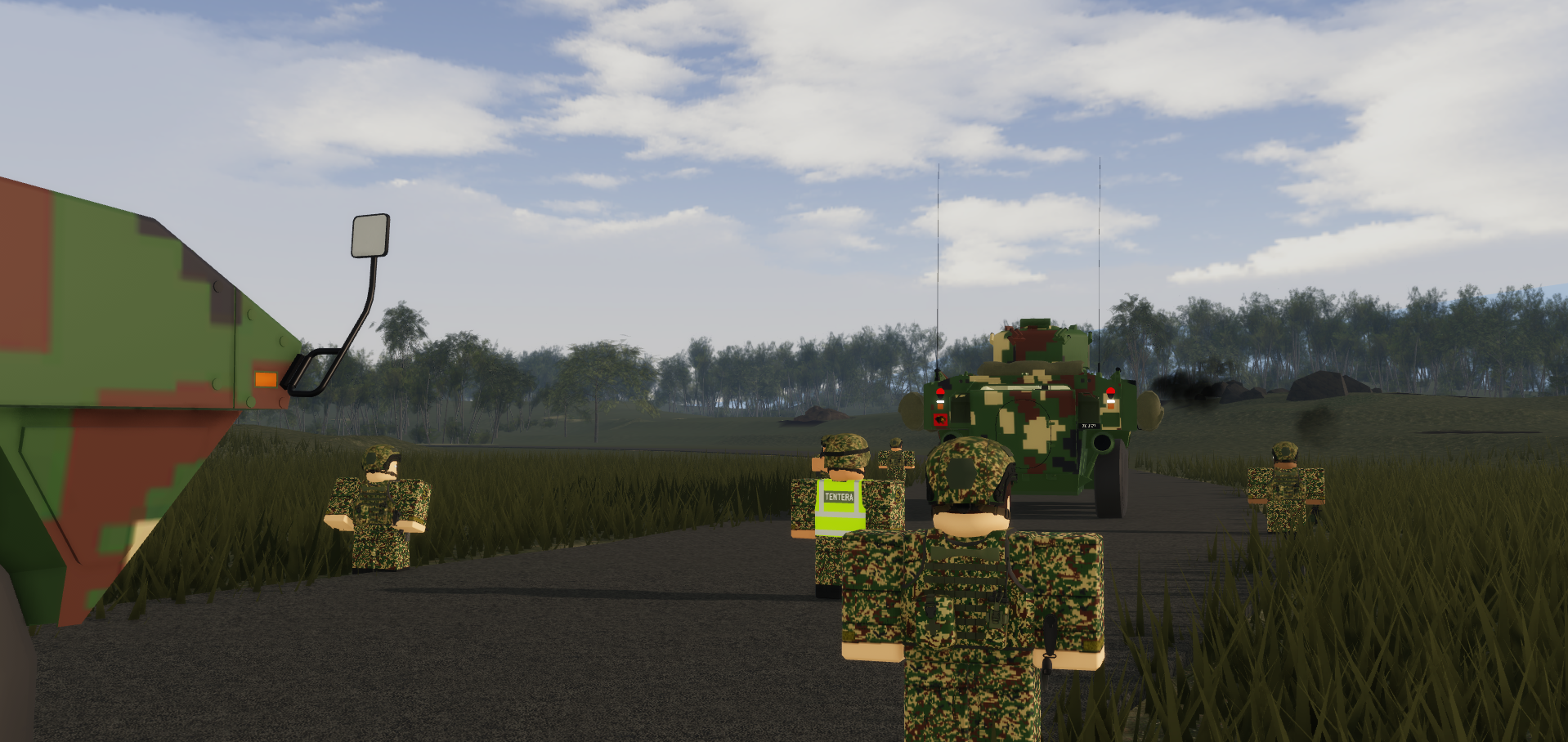
- Tentera, Polis, Bomba: These are dedicated roleplay agencies simulating the Malaysian Armed Forces, police, and fire & rescue services, respectively (MYSverse) (MYSverse). They are heavily-researched, realistic recreations of civil service roles, requiring training and discipline within the game.
- Ruumah (v2 & v3): Festive cultural experiences (virtual Hari Raya open houses) set in a traditional kampung village and a suburban locale, complete with Malaysian food, music, and traditions (MYSverse) (MYSverse).
- MYSverse Sim: A sophisticated, realism-focused simulation mode that integrates all these elements. It requires off-platform training/certification for players, blending education with serious roleplay (MYSverse).
Together, these features make MYSverse a realistic and immersive microcosm of Malaysia. The environment encourages players to learn about Malaysian society and culture organically while having fun. This presents a unique opportunity for government entities to engage with a tech-savvy audience in a familiar, interactive setting.
Public Sector Engagement Opportunities
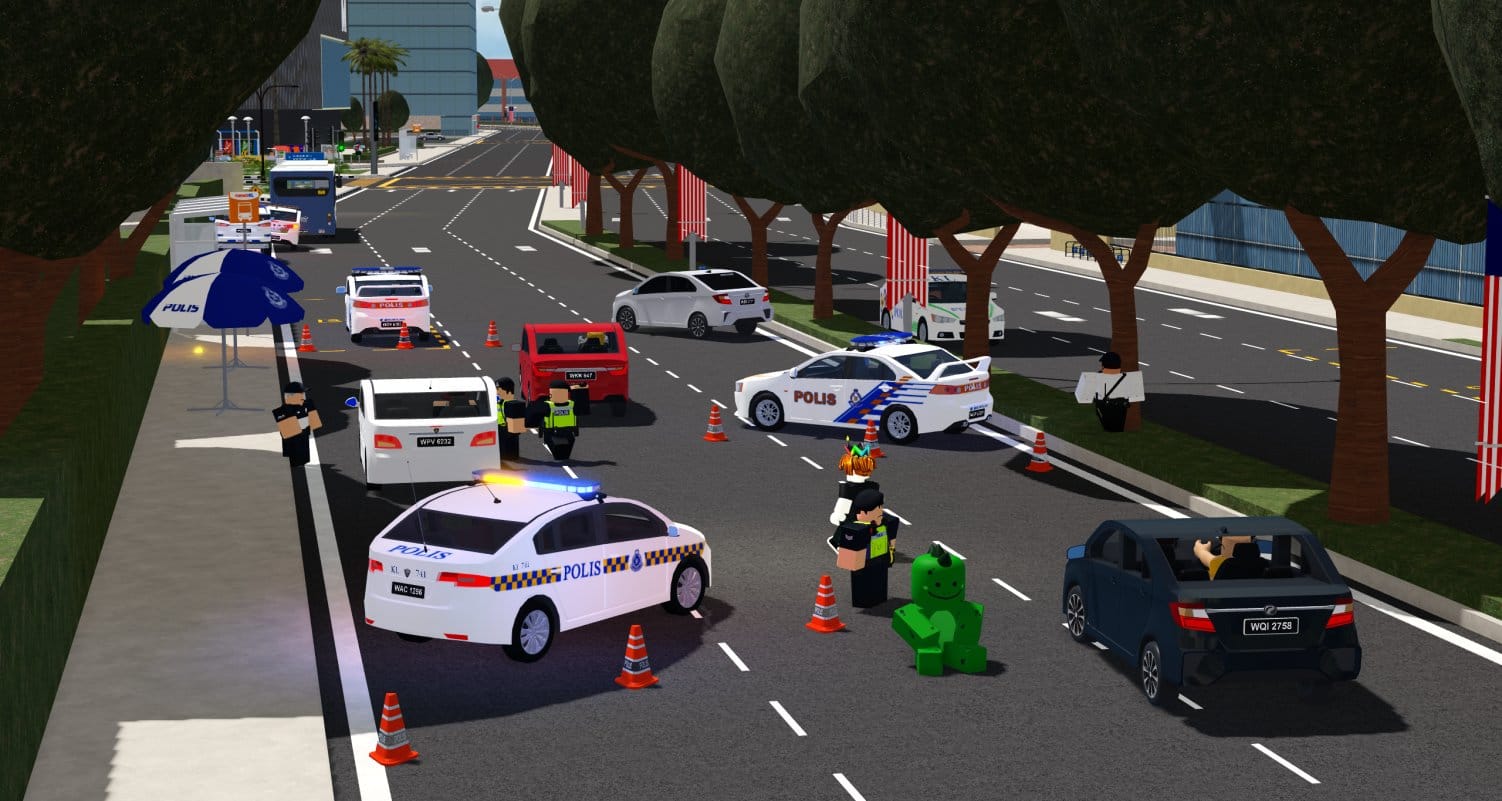
MYSverse can serve as a novel platform for government-citizen engagement, especially to reach younger Malaysians in a space they enjoy. Possible applications include:
- Virtual Town Halls & Citizen Interaction: Government agencies could host Q&A sessions or virtual “meet your representative” days inside a MYSverse city hall. Users’ avatars might visit a virtual Pejabat Kerajaan (government office) in Bandaraya to voice concerns or give feedback. This mirrors Seoul’s approach of building a virtual City Hall where citizens can meet avatars of public officials and even file civil complaints (Seoul, Barbados check into metaverse as governments eye virtual presence | Reuters) (Seoul, Barbados check into metaverse as governments eye virtual presence | Reuters). By meeting people “where they are” in the metaverse, officials can encourage civic participation in a less formal, youth-friendly context.
- Public Awareness Campaigns: Ministries can leverage the platform to disseminate important information or social messages through in-game billboards, events, or NPC (non-player character) interactions. For example, the U.S. Department of Homeland Security partnered with Roblox to display in-game billboards with internet safety tips and plans to develop immersive safety education experiences (DHS Launches Know2Protect™ Public Awareness Campaign to Combat Online Child Exploitation and Abuse With Many Public and Private Sector Partners | Homeland Security). Similarly, Malaysian authorities could run campaigns on topics like online safety, public health, or voter education within MYSverse – ensuring the message is delivered in an interactive format that resonates with the digital generation.
- Interactive Policy Simulations: Complex issues (like budgeting, urban planning, or environmental policies) could be turned into simulation games on MYSverse. Citizens might roleplay as city council members in Bandaraya, making decisions on city development, and immediately see outcomes in the virtual city. This hands-on approach can demystify governance and make public policy more accessible. It aligns with the global trend of using digital twins of cities to engage stakeholders (Seoul, Barbados check into metaverse as governments eye virtual presence | Reuters). For instance, city planners in other countries use virtual city models to get public input on development – MYSverse could similarly involve citizens in envisioning future Malaysian projects in a risk-free environment.
Why this matters: Using MYSverse for public sector engagement can increase transparency and trust. Youth and other hard-to-reach groups can interact with government programs in a playful yet meaningful way, fostering greater understanding of public initiatives. Moreover, being present in an online world signals that the government is forward-thinking. As one expert noted, it’s in governments’ interest to understand and be present in virtual worlds as they become everyday life (Seoul, Barbados check into metaverse as governments eye virtual presence | Reuters) (Seoul, Barbados check into metaverse as governments eye virtual presence | Reuters). By engaging via MYSverse, Malaysian agencies can demonstrate tech leadership while ensuring “no citizen is left behind” – even those more active in virtual spaces than in physical public forums.
Educational Applications in MYSverse
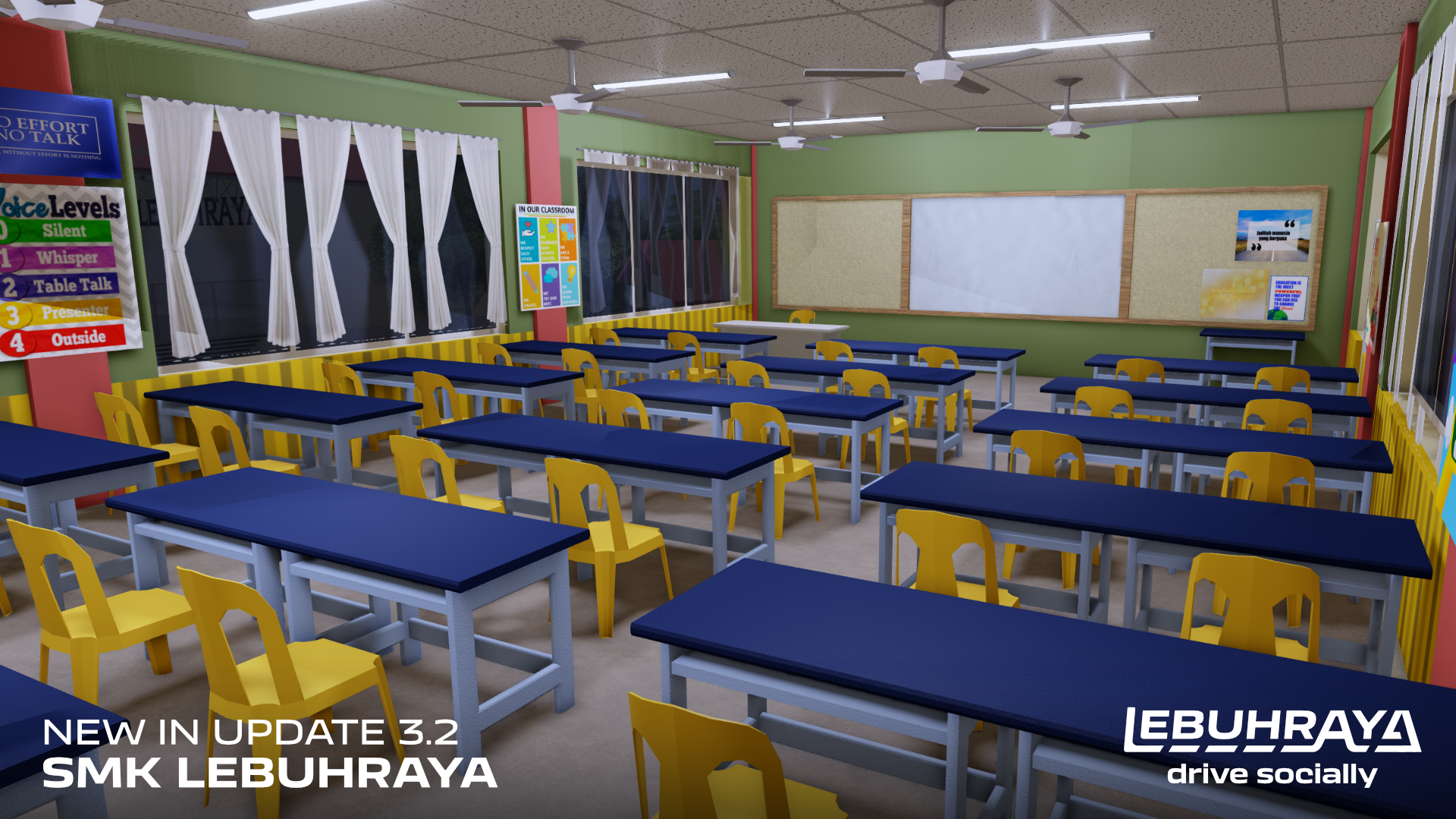
The convergence of gaming and learning in MYSverse opens up powerful educational opportunities. The platform’s immersive nature can make learning engaging and interactive:
- Classroom Extensions and Field Trips: Schools could collaborate with MYSverse to create virtual field trips to historical sites or museums. For example, a history lesson on Melaka Sultanate could be enhanced by a guided tour in a Roblox-built Melaka in MYSverse. Students would experience the architecture and culture firsthand in the virtual world. This concept builds on the success of other educational Roblox experiences like Boston’s Museum of Science “Mission: Mars” program, which engages students in engineering design through an interactive Mars simulation (Learning enters the metaverse with “Mission: Mars” Roblox experience). If a Mars mission can teach engineering, a Merdeka Day simulation in MYSverse could teach Malaysian history and patriotism in an unforgettable way.
- STEM and Skills Training: The government (via the Ministry of Education or higher education institutions) can introduce coding and digital creation modules using MYSverse. Roblox’s platform allows user-generated content – so students could be tasked with building a Malaysian landmark or scripting a simple traffic system in Bandaraya, learning programming logic in the process. Roblox itself has committed funding to develop immersive STEM curricula (Teaching in the 'Metaverse'? Roblox Looks to Make It a Reality), showing the viability of such efforts. A structured “build your city” challenge in MYSverse, perhaps supported by a government tech literacy program, could nurture creativity and technical skills among youth.
- Civic and Moral Education: MYSverse’s roleplay scenarios require teamwork, discipline, and understanding of community roles (e.g. players acting as police must follow protocols, firefighters must cooperate to douse fires). These simulations can be used in school programs or extracurricular clubs to teach leadership, responsibility, and the importance of public services. Educators could, for instance, run a “Day in the life of a Paramedic” scenario where students work together in the virtual hospital to triage patients, implicitly learning about healthcare and empathy. The realism of MYSverse Sim – with its requirement for training and certification (MYSverse) – means these scenarios are not just games but serious learning exercises.
Internationally, metaverse learning is on the rise. Some K-12 schools are piloting VR classrooms and sandbox games for education, finding that students are highly engaged in these environments (The Metaverse Is Already Here, and K–12 Schools Are Using It for ...). The Malaysian government can ride this wave by integrating MYSverse into its digital education initiatives (like STEM competitions or cultural heritage projects). By doing so, Malaysia not only modernizes its pedagogy but also showcases local content – ensuring that when students step into a virtual world to learn, they see their own country and culture represented, not just foreign settings. This strengthens identity and interest in national heritage through experiential learning.
Tourism Promotion and Virtual Travel
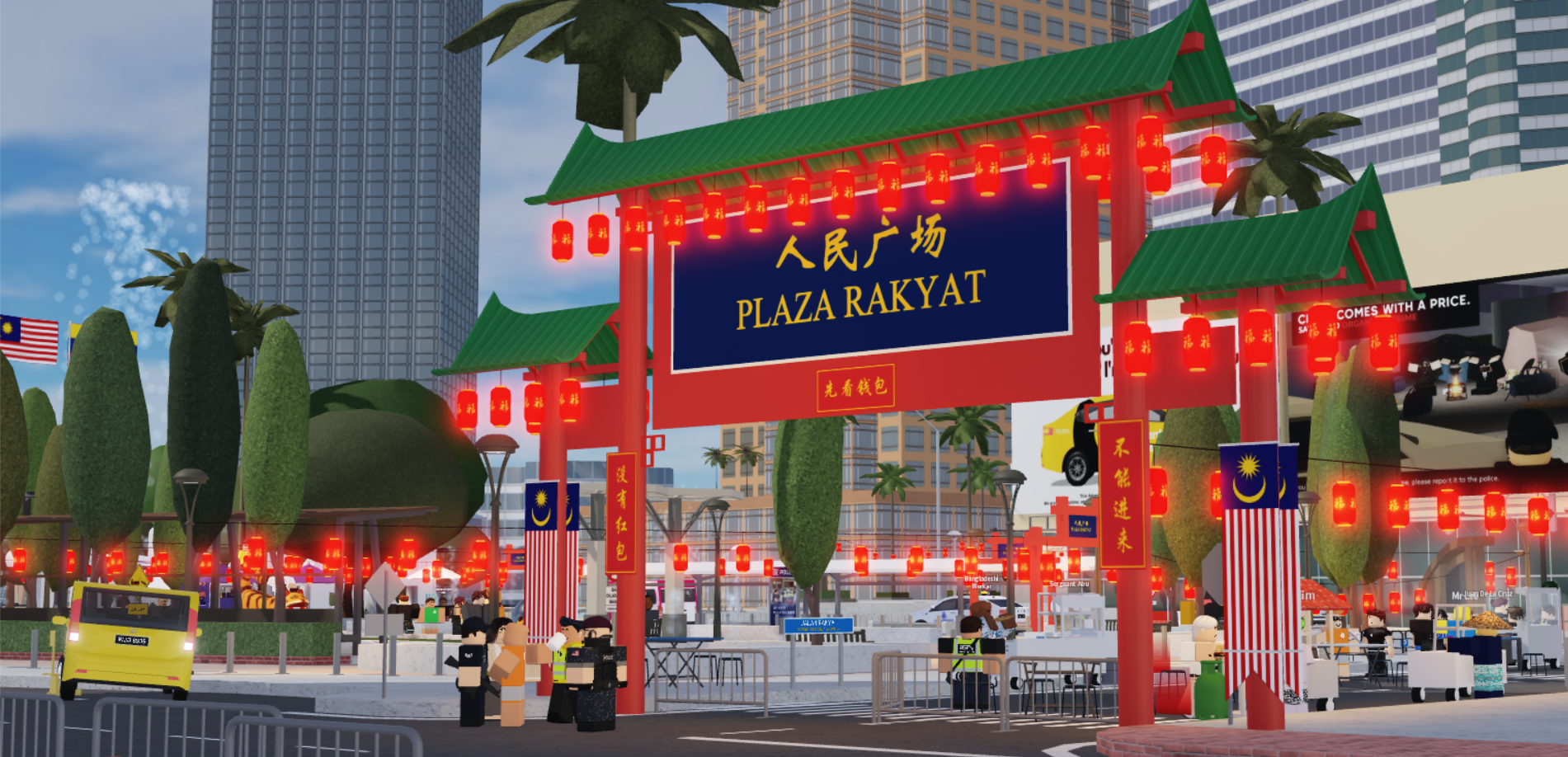
One of the most promising uses of MYSverse for the government is tourism promotion. In a post-pandemic era, virtual tourism has emerged as both a complement and a gateway to real travel. MYSverse’s rich Malaysian scenes can become an interactive brochure for Visit Malaysia:
- Virtual Destination Showcases: The Tourism Ministry can collaborate with MYSverse developers to create digital twins of popular destinations – from the Petronas Twin Towers and KLCC park, to Mount Kinabalu trails or Penang’s Georgetown streets. International audiences on Roblox could explore these sites virtually, sparking interest to visit in person. Wales’s tourism board has done exactly this by launching an immersive experience on a metaverse platform to showcase Welsh landscapes and heritage, giving global visitors a taste of real-life attractions (Croeso i Gymru! Wales becomes first UK nation to launch metaverse experience | GOV.WALES) (Croeso i Gymru! Wales becomes first UK nation to launch metaverse experience | GOV.WALES). In fact, Wales became the first UK nation to use a metaverse world (Spatial) for tourism marketing, complete with a virtual castle and quests that highlight its culture (Croeso i Gymru! Wales becomes first UK nation to launch metaverse experience | GOV.WALES) (Croeso i Gymru! Wales becomes first UK nation to launch metaverse experience | GOV.WALES). Malaysia can similarly become a pioneer in Southeast Asia by using MYSverse as a virtual window into its diverse tourist spots – offering interactive cultural snippets like virtual food stalls in Penang or a ride on a VR cable car at Genting Highlands.
- Cultural Events and Festivals Online: MYSverse has already hosted virtual Hari Raya open houses (the Ruumah series) (MYSverse) (MYSverse). The government could officially support or co-organize such events for major celebrations – Chinese New Year, Deepavali, Independence Day (Hari Merdeka), etc. A Virtual Merdeka Day parade in MYSverse, for example, could allow anyone in the world to experience the national celebration, complete with marching bands and fireworks rendered in Roblox. Not only would this engage Malaysian youth in patriotic festivities, but it also serves as cultural diplomacy: foreigners can join in, learn the significance of our holidays, and feel invited to experience the real thing. Such events double as promotion and as inclusive outreach to the Malaysian diaspora and international friends.
- Gamified Travel Itineraries: The MYSverse platform can include quests or challenges that encourage exploration of its virtual Malaysia. The tourism board can sponsor in-game achievements, such as a “Visit all States Challenge” where players collect badges for visiting virtual Sabah, Sarawak, Kedah, etc., each showcasing local highlights. Wales implemented a similar idea with quests like finding hidden dragons and building a virtual itinerary of real Welsh sites (Croeso i Gymru! Wales becomes first UK nation to launch metaverse experience | GOV.WALES). Completing these challenges not only educates players about Malaysia’s geography and attractions, but could be tied to real-world rewards (discounts, souvenir vouchers) to convert virtual interest into actual tourism.
By promoting tourism through MYSverse, Malaysia taps into a 600-million-strong metaverse user base that is already exploring virtual worlds (Croeso i Gymru! Wales becomes first UK nation to launch metaverse experience | GOV.WALES). This is a cost-effective way to market the country. As seen with Seoul’s metaverse platform, virtual tours of iconic landmarks can be integrated alongside e-government services (Metaverse Tourism and Government Service Platform Debuts in Seoul) (Metaverse Tourism and Government Service Platform Debuts in Seoul) – indicating that people are keen to explore cities digitally. A vibrant Malaysian presence online boosts national branding (as a modern, innovative destination) and can entice travelers who experienced the “virtual taste” to pursue the real experience. In essence, MYSverse can function as a 24/7 global tourism expo for Malaysia, accessible from anywhere in the world.
Civil Service Simulations and Training

MYSverse’s realistic roleplay of military, police, firefighting, and other services offers a creative avenue for training and recruitment in the civil service. The government can use these simulations to both interest young Malaysians in public service careers and to supplement the training of current personnel:

- Recruitment Through Roleplay: Early exposure to civil service roles in a fun, low-stakes environment can inspire career interest. The Malaysian Armed Forces, Royal Police, or Fire and Rescue Department could support in-game events or competitions – for instance, a virtual military exercise tournament or a police detective quest – to identify and encourage teenagers who excel in these scenarios. The United States military has long recognized the value of games for recruitment: the U.S. Army’s “America’s Army” game (launched in 2002) was downloaded over 40 million times and helped put military service “front and center” in youth culture ( Why We Still Fight: Adolescents, America's Army, and the Government-Gaming Nexus | Open Access Journals) ( Why We Still Fight: Adolescents, America's Army, and the Government-Gaming Nexus | Open Access Journals). It even doubled as a tool to teach marksmanship and team tactics to potential recruits ( Why We Still Fight: Adolescents, America's Army, and the Government-Gaming Nexus | Open Access Journals). By comparison, MYSverse’s Tentera and Polis simulations are already realistic – integrating real procedures and chain-of-command structures. If government recruiters interact with players in these simulations (e.g., an official army avatar observing or mentoring top players during a mission scenario), it could effectively become a talent pipeline. Young players who enjoy and perform well in the virtual military might be more inclined to enlist for the real military, having already tasted the camaraderie and challenge.
- Immersive Training Exercises: Beyond recruitment, there’s potential for using MYSverse as a training sandbox for civil servants. For example, police academies could use a controlled private version of the Polis simulation to drill cadets on decision-making in a virtual city – such as managing traffic during an accident, or handling a simulated crime scenario with civilians (all scripted in Roblox). This wouldn’t replace physical training, but it allows safe repetition of scenarios. The metaverse is increasingly used for training elsewhere: the U.S. Marine Corps is developing a program (Project Tripoli) to blend live and virtual training, where Marines in VR can train alongside those on real-world exercises, sharing the same simulation environment (Marine Corps Looks Ahead to the Metaverse for Training Purposes | FedTech Magazine). Likewise, firefighters worldwide use VR to practice fire incidents in varied conditions without real danger (Virtual Reality Training for the Fire Service - Firehouse Magazine). MYSverse can serve similar purposes at a fraction of cost – e.g., a virtual HazMat incident in Bandaraya for fire brigade trainees to practice communication and response protocols. The realistic vehicle models and equipment in MYSverse Bomba (fire service) roleplay (MYSverse) make it well-suited to simulate emergencies with authenticity.
- Community Outreach and Preparedness: Another angle is using civil service simulations to educate the public on safety and preparedness. The Health Ministry or NADMA (disaster management agency) could create a disaster response game within MYSverse – where players take on the role of rescuers after a flood or learn to perform CPR in a virtual clinic. This turns public education into interactive training. During gameplay, official tips or guidelines can be given (e.g., how to pack an emergency flood kit). Such gamification is effective in drilling life-saving knowledge. Some governments have even conducted full drills in virtual settings; for instance, Egypt’s local government ministry used a metaverse application to create a virtual operations center for training local officials on service delivery (Egypt uses metaverse technology for 1st time to train localities, improve services - EgyptToday) (Egypt uses metaverse technology for 1st time to train localities, improve services - EgyptToday). If local officials can be trained via metaverse, regular citizens – especially the young – can certainly learn civic defense skills in a platform like MYSverse.
By embracing MYSverse for these simulations, Malaysian civil services would modernize their image and methods. It sends a message that the military and emergency services are not stuck in old ways but are innovative and engage openly with society. This strengthens the public’s connection to these institutions; a teenager who has “served” as a virtual firefighter in-game may feel greater respect and understanding for real firefighters. Moreover, this strategy can help bridge generation gaps in the public service. Just as Seoul’s mayor noted the need to adapt services for a tech-savvy generation with “easy mode” metaverse options (Metaverse Tourism and Government Service Platform Debuts in Seoul), Malaysia can ensure its essential services remain relatable and appealing to younger demographics through MYSverse.
National Branding and Cultural Diplomacy
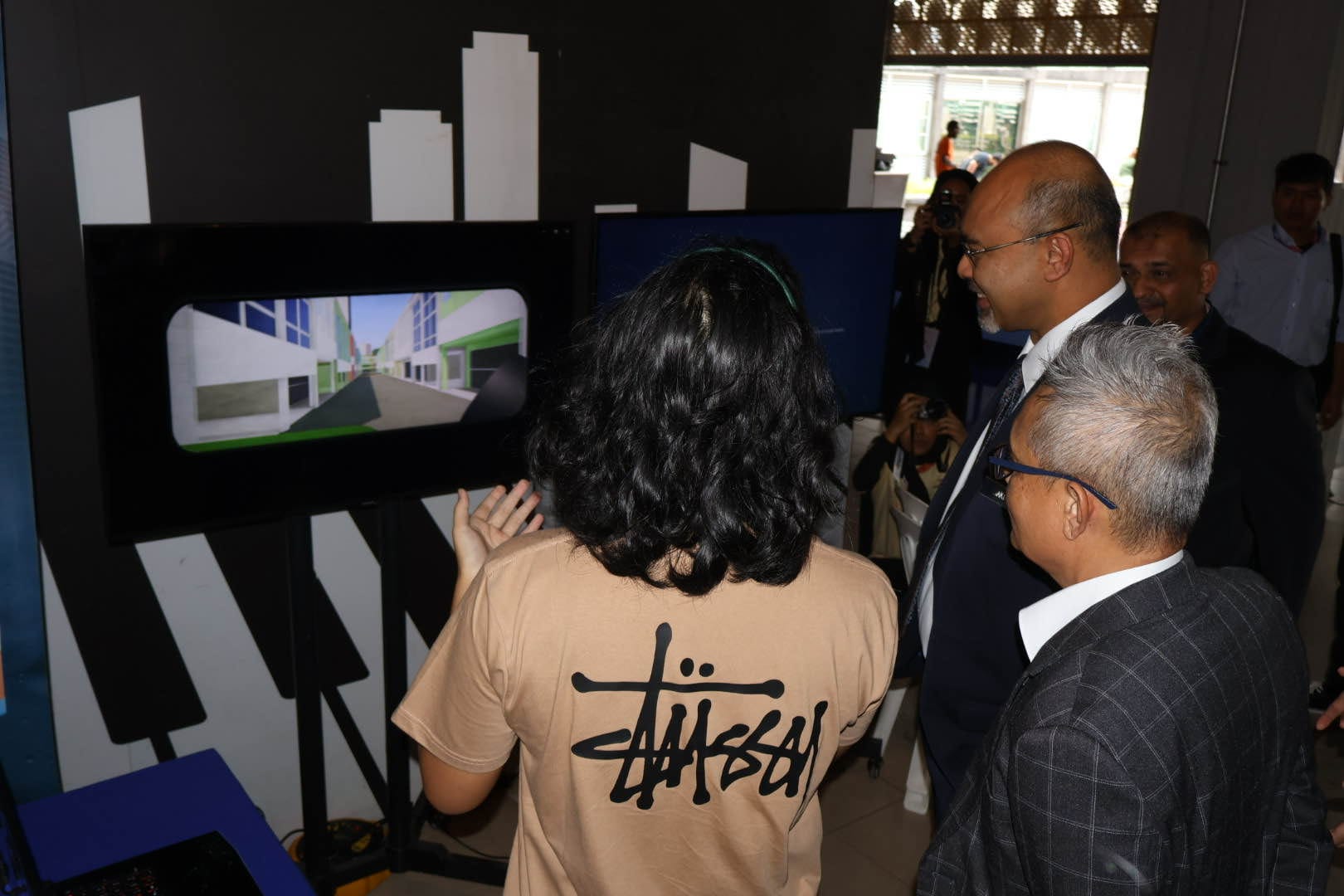
MYSverse offers Malaysia a platform not just for internal benefits but also for national branding on the international stage. By showcasing the nation’s culture and technological innovation, the government can strengthen Malaysia’s image globally:
- Metaverse Ambassadors: The Ministry of Foreign Affairs could establish a virtual Malaysian Embassy or Cultural Center in MYSverse. While MYSverse is on Roblox (primarily entertainment-focused), an official presence could be created in partnership with the community – a place where international users can learn about Malaysia’s history, export products, or educational opportunities. This concept of metaverse diplomacy is already being tested: the government of Barbados made headlines by opening the world’s first metaverse embassy in Decentraland, seeing it as a cost-effective way for a small nation to expand diplomatic reach and “showcase culture and business opportunities” in an immersive way (Seoul, Barbados check into metaverse as governments eye virtual presence | Reuters) (Seoul, Barbados check into metaverse as governments eye virtual presence | Reuters). Malaysia could similarly lead in Southeast Asia by creating a sovereign digital presence. For example, a virtual Tourism Malaysia office in MYSverse might feature interactive exhibits of UNESCO World Heritage sites, or a Malaysia Trade Pavilion could show virtual prototypes of Malaysian innovations. This would project an image of Malaysia as a high-tech, forward-looking nation open to global engagement.
- Cultural Showcases and Exchange: MYSverse’s culturally rich content (festivals, traditional settings, multicultural characters) can serve as a tool for cultural diplomacy. The government can invite other countries’ embassies or cultural institutes to co-host virtual cultural exchange programs. Imagine a Malaysia-Japan virtual festival in MYSverse: one week, Malaysian traditional games and dances are taught to players (via their avatars) and the next week Japanese festivals are showcased, all within a special event space in the platform. Such initiatives foster mutual understanding and put Malaysia on the map as a proponent of innovative cultural exchange. It amplifies the reach of programs like Tourism Malaysia’s cultural troupes or Education Malaysia’s student outreach by moving them into an infinitely scalable online realm.
- Youth Engagement & National Pride: Endorsing MYSverse can be part of a strategy to instill patriotism and unity. For instance, a National Day Challenge could be issued by the government for the MYSverse community to collectively build or improve a virtual national monument (say, a more detailed Tugu Negara monument) – with recognition from leaders for the best contributions. This blurs the line between playing and nation-building: the youth literally help shape virtual Malaysia. Government recognition (like a shout-out from a minister on social media to top MYSverse creators, or incorporating some of their virtual designs into real-life events as backdrops) will signal that contributions in the metaverse are valued in the real world. It’s a powerful message that Malaysia’s identity is co-created by its people, both offline and online. Many nations are starting to take the metaverse seriously for public image – South Korea’s national investment in metaverse technology (over $186 million committed) is one example of betting on this trend (Metaverse Tourism and Government Service Platform Debuts in Seoul). If Malaysia aligns its branding with platforms like MYSverse, it positions itself as a tech-savvy nation that still honors culture, thereby attracting investors and visitors who see Malaysia as a harmonious blend of tradition and innovation.
International Comparisons and Lessons
To put Malaysia’s potential metaverse adoption in context, here are a few real-world examples of governments using virtual platforms that parallel what MYSverse offers:
- Seoul’s Metaverse for Public Services
- The Metropolitan Government of Seoul launched Metaverse Seoul, a 3D world where citizens access municipal services and tourism virtually (Metaverse Tourism and Government Service Platform Debuts in Seoul) (Metaverse Tourism and Government Service Platform Debuts in Seoul).
- In its first phase, people can file official documents, get tax advice, and tour Seoul’s top 10 attractions all in one app (Metaverse Tourism and Government Service Platform Debuts in Seoul) (Metaverse Tourism and Government Service Platform Debuts in Seoul).
- This shows the power of combining e-government with a virtual city – a model Malaysia could emulate by integrating some public services or info kiosks into MYSverse’s virtual Kuala Lumpur.
- Notably, Seoul plans a virtual Mayor’s Office and sees the platform as an “inclusive administrative service” available anytime, breaking location barriers (Metaverse Tourism and Government Service Platform Debuts in Seoul).
- Barbados & Diplomatic Metaverse Presence
- Barbados, a small Caribbean nation, pioneered having an official embassy in a metaverse.
- By partnering with a platform (Decentraland), Barbados legally “claimed” digital land for its embassy (Barbados to establish world's first metaverse embassy - TRT Global). The motive was to gain diplomatic parity with bigger nations and promote culture in a space without needing physical embassies (Seoul, Barbados check into metaverse as governments eye virtual presence | Reuters) (Seoul, Barbados check into metaverse as governments eye virtual presence | Reuters).
- This underscores a lesson: even nations with limited resources can amplify their international voice via virtual platforms – a strategy Malaysia could leverage through MYSverse to reach global youth audiences with our cultural narrative.
- Wales’s Virtual Tourism World
- As discussed, Wales built a virtual experience on Spatial to attract tourists, being among the first to use a metaverse for national tourism (Croeso i Gymru! Wales becomes first UK nation to launch metaverse experience | GOV.WALES) (Croeso i Gymru! Wales becomes first UK nation to launch metaverse experience | GOV.WALES).
- It essentially gamified the travel preview. The success of this approach can guide Tourism Malaysia in using immersive previews (like virtual reality sampan rides on Malacca River or a hike through Taman Negara simulated in MYSverse) as part of its marketing mix.
- Wales demonstrated that government-led metaverse projects can capture media attention and public curiosity, helping rebrand a destination as innovative (Croeso i Gymru! Wales becomes first UK nation to launch metaverse experience | GOV.WALES).
- United States Military in Gaming
- The U.S. armed forces have integrated into popular gaming and metaverse channels for outreach.
- Besides the America’s Army game for recruitment ( Why We Still Fight: Adolescents, America's Army, and the Government-Gaming Nexus | Open Access Journals) ( Why We Still Fight: Adolescents, America's Army, and the Government-Gaming Nexus | Open Access Journals), the U.S. Navy and Air Force run esports teams and streaming channels to engage young gamers (The US military is embedded in the gaming world. Its target: teen recruits | US military | The Guardian) (The US military is embedded in the gaming world. Its target: teen recruits | US military | The Guardian).
- They allocate a notable part of their marketing budget (3–5%) to these efforts, seeing gaming communities as prime recruiting grounds (The US military is embedded in the gaming world. Its target: teen recruits | US military | The Guardian) (The US military is embedded in the gaming world. Its target: teen recruits | US military | The Guardian).
- The takeaway for Malaysia’s defense and police agencies is clear: engaging youth through platforms like MYSverse is not frivolous, but a strategic necessity to maintain future talent pipelines. When done ethically and with educational context, it can yield recruitment interest while showcasing the honor and responsibility of service – countering any negative or glamorized notions of these jobs.
- Education and Skills Development Programs
- Governments and NGOs around the world are testing educational content in metaverse platforms. For instance, NASA and museums have created Roblox experiences to teach space science and engineering (like the Mission: Mars challenge) (Learning enters the metaverse with “Mission: Mars” Roblox experience).
- Closer to governance, Egypt’s Ministry of Local Development introduced courses on metaverse applications to improve local public service delivery (Egypt uses metaverse technology for 1st time to train localities, improve services - EgyptToday) – indicating even public officials are being trained to use and understand these technologies for citizen benefit.
- These cases reinforce that Malaysia’s own push for digital education (through initiatives like the smart classroom or e-learning hubs) can be augmented by local metaverse content (like MYSverse), and that civil servants may need to be trained to operate in virtual environments as part of future public service.
In learning from these examples, a common thread emerges: the metaverse is a tool, not a toy. Governments using it have clear goals – be it improving access to services, promoting culture, training staff, or inspiring youth. The Malaysian government can adopt best practices from these pioneers: ensure any official use of MYSverse has a purpose (education, outreach, etc.), provide moderation and safety (Roblox has safeguards and Malaysia can implement its own in partnered events), and measure impact (e.g., track if virtual engagements lead to increased tourism or more youth applying to civil service).
Conclusion
MYSverse, with its foundation of realism and cultural richness, represents a microcosm of Malaysia in the digital realm. By strategically partnering with this platform, the Malaysian government can achieve multiple objectives in an innovative way: engaging citizens (especially the young) in governance dialogues, enhancing education through immersive learning, showcasing tourism attractions interactively, refining civil service recruitment and training, and amplifying Malaysia’s brand globally as a nation proud of its heritage and confident in its technological future.
The platform’s strengths – immersive roleplay and authentic cultural integration – mean that any initiative taken there resonates more deeply with participants than a traditional website or video might. Users don’t just read about Malaysia or watch a video; they experience it by walking virtual streets, tasting virtual rendang at a Hari Raya event, or stepping into the shoes of a firefighter saving a neighborhood. This creates emotional connection and retention of knowledge.
By tapping into MYSverse, Malaysian authorities also send a powerful signal of inclusivity and modernization: that the government is willing to venture beyond office walls and meet people in new digital spaces, that it values the creative communities building these worlds, and that it sees technology as an ally in nation-building. As the metaverse and real world continue to converge, Malaysia stands to gain by being an early mover in this space – much like Seoul, Barbados, and Wales – but with a uniquely Malaysian approach that prioritizes education, community, and cultural pride.
In summary, MYSverse can be a virtual nation-building partner. The case study of its potential uses shows a spectrum of benefits, from more engaged and informed citizens to international visitors enthused about Malaysian culture. With thoughtful implementation, the Malaysian government’s use of MYSverse could become a model for how a country can embrace the metaverse era – not as a replacement for reality, but as a dynamic extension of it that serves the public good in creative and impactful ways.
Sources:
- MYSverse Official Website and Community Descriptions (MYSverse) (MYSverse Malaysian Community | Roblox Group - Rolimon's)
- Seoul Metropolitan Government – Metaverse Seoul platform launch (Metaverse Tourism and Government Service Platform Debuts in Seoul) (Metaverse Tourism and Government Service Platform Debuts in Seoul)
- Reuters – Seoul, Barbados check into metaverse (government virtual initiatives) (Seoul, Barbados check into metaverse as governments eye virtual presence | Reuters) (Seoul, Barbados check into metaverse as governments eye virtual presence | Reuters)
- Wales Government Press Release – Wales launches metaverse experience (Croeso i Gymru! Wales becomes first UK nation to launch metaverse experience | GOV.WALES) (Croeso i Gymru! Wales becomes first UK nation to launch metaverse experience | GOV.WALES)
- U.S. DHS – Know2Protect Roblox partnership (public awareness in gaming) (DHS Launches Know2Protect™ Public Awareness Campaign to Combat Online Child Exploitation and Abuse With Many Public and Private Sector Partners | Homeland Security)
- Museum of Science, Boston – Mission: Mars Roblox educational game (Learning enters the metaverse with “Mission: Mars” Roblox experience)
- Egypt Today – Metaverse training for local government workers (Egypt uses metaverse technology for 1st time to train localities, improve services - EgyptToday) (Egypt uses metaverse technology for 1st time to train localities, improve services - EgyptToday)
- U.S. Marine Corps – Project Tripoli blended training (FedTech Magazine) (Marine Corps Looks Ahead to the Metaverse for Training Purposes | FedTech Magazine)
- Guardian – U.S. military esports and gaming outreach stats (The US military is embedded in the gaming world. Its target: teen recruits | US military | The Guardian) (The US military is embedded in the gaming world. Its target: teen recruits | US military | The Guardian)
- GlobalMediaJournal – Analysis of America’s Army game impact ( Why We Still Fight: Adolescents, America's Army, and the Government-Gaming Nexus | Open Access Journals)